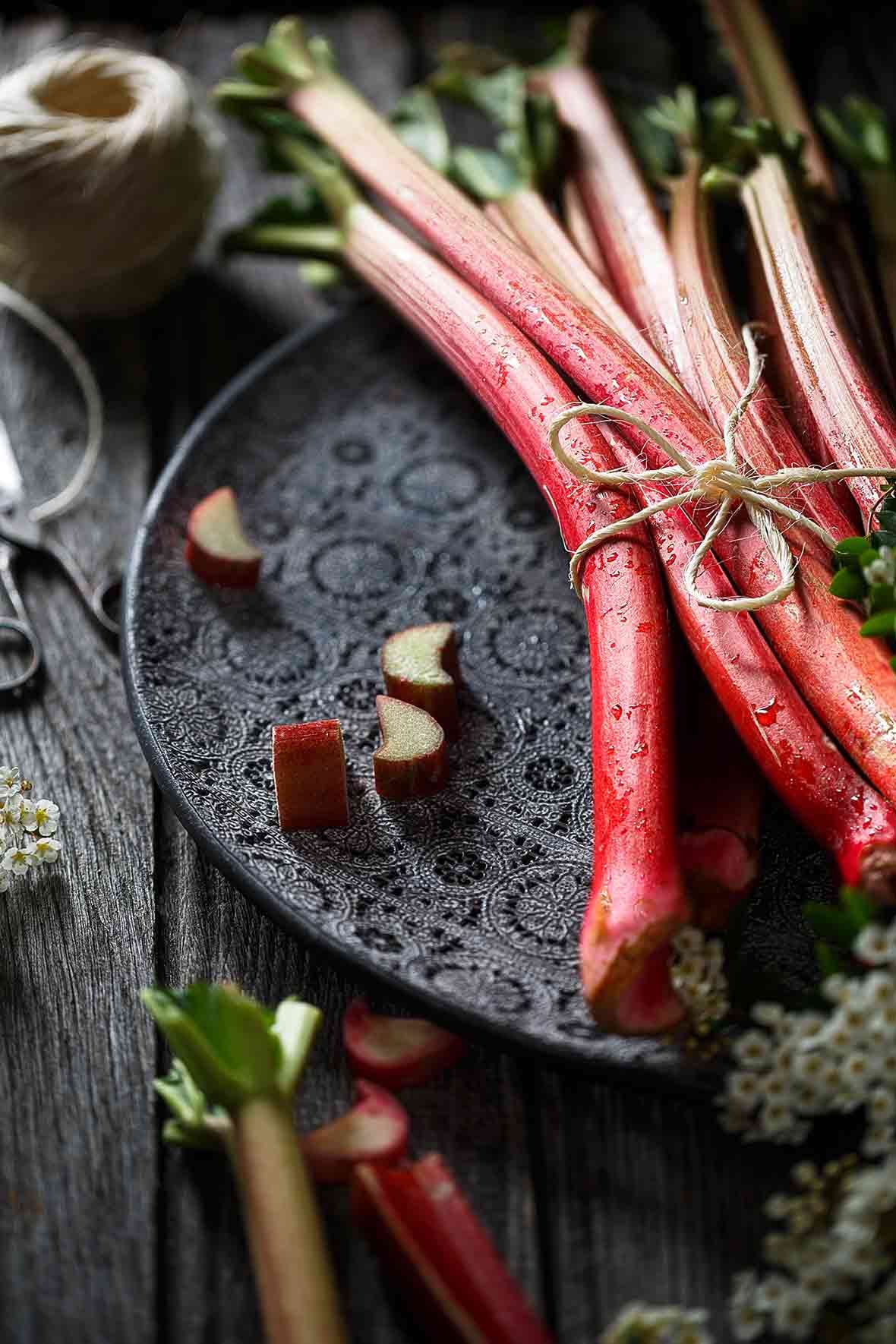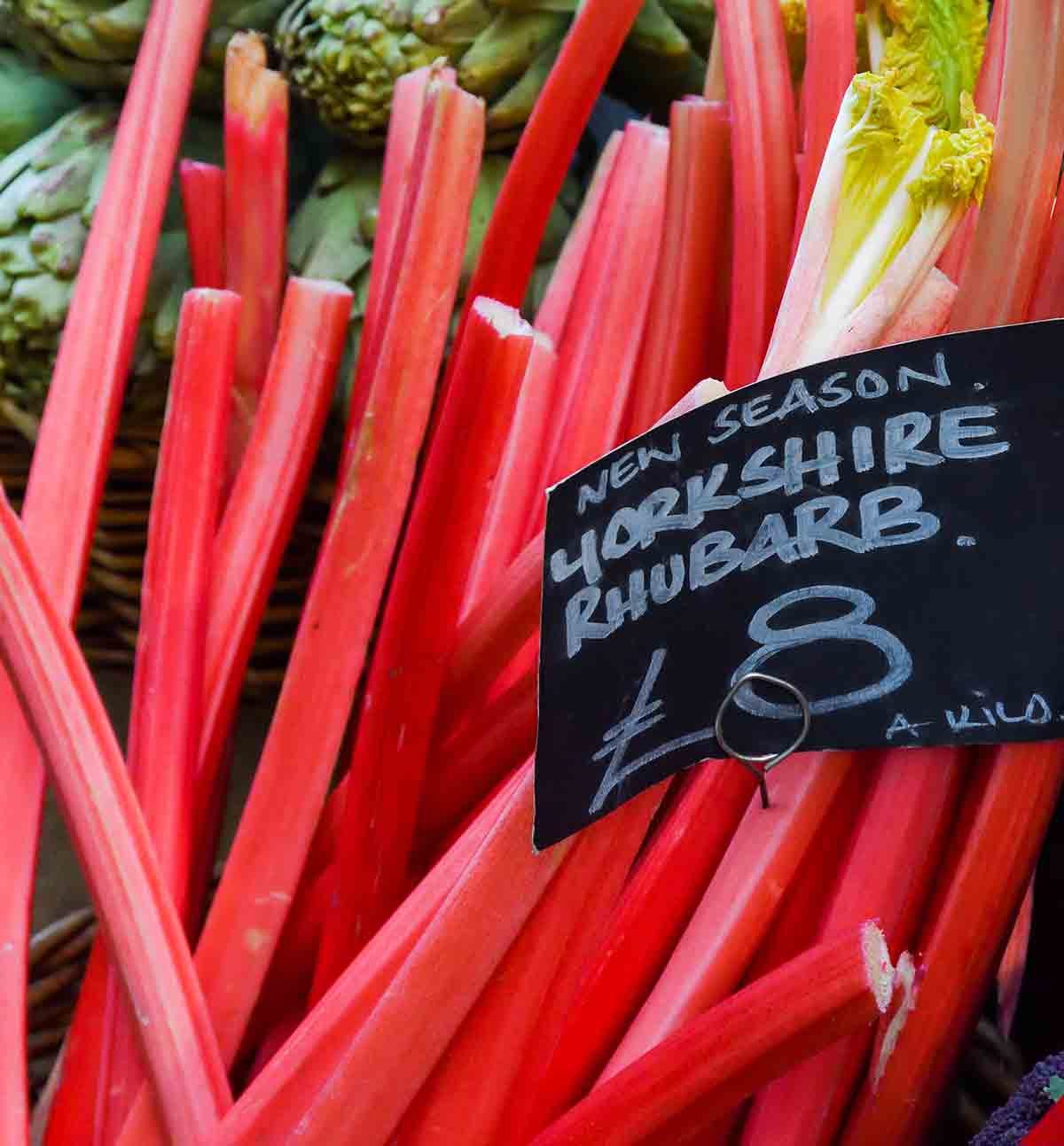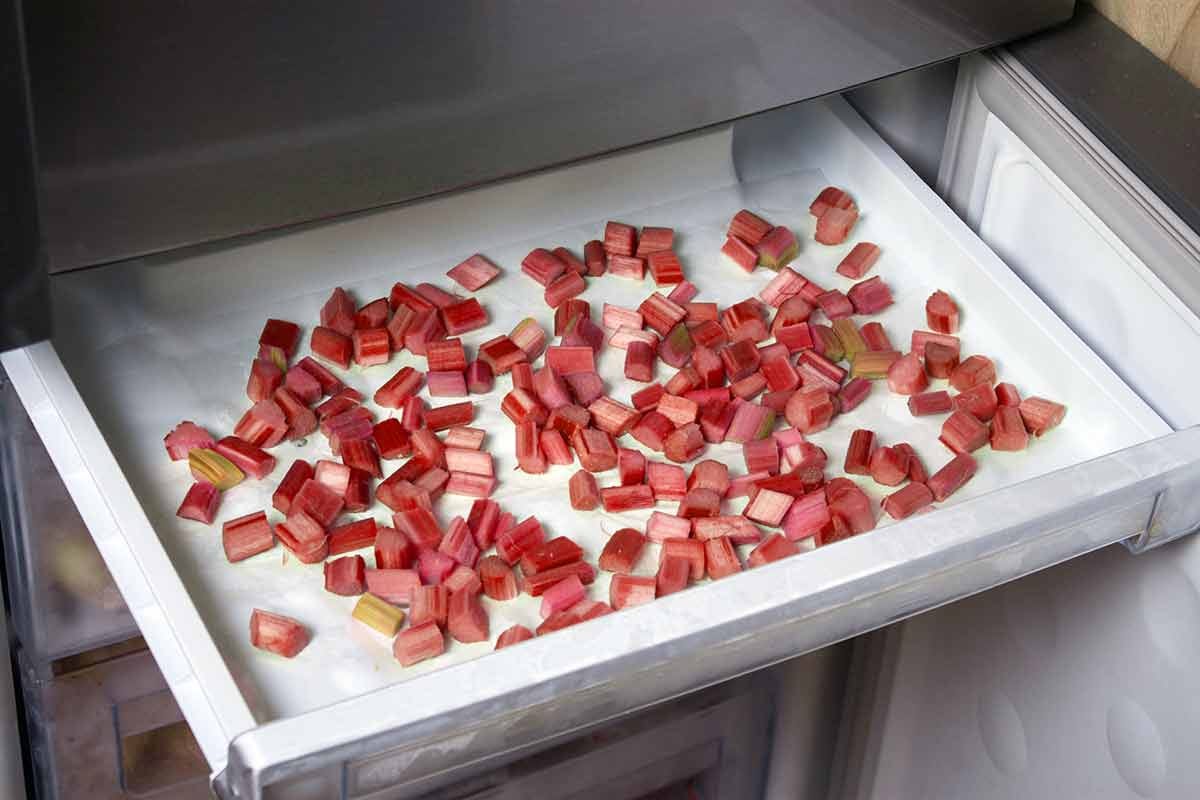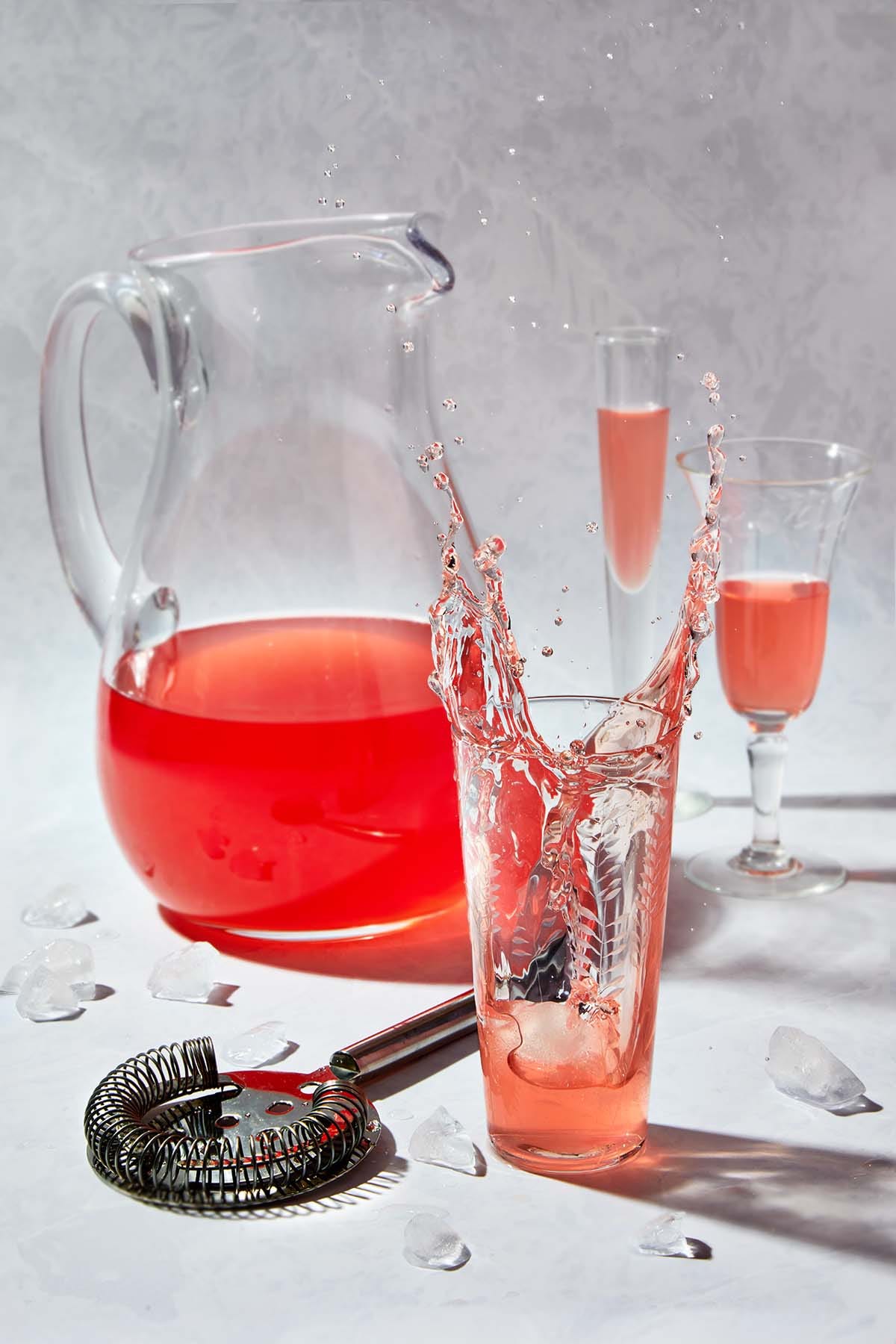Tart of Gold: Spring Rhubarb
Everything you wanted to know about rhubarb but were afraid to ask. (Oh wait, that's sex.) Eh, what the hell – I think rhubarb is sexy. There, I said it.

[Paid-subscriber recipe at the end.]
THERE WAS A SCRAPPY LITTLE PATCH of rhubarb at the end of a narrow alley on Brownell Street in Fall River, Massachusetts, when I was maybe seven or eight. My friends Jody and John lived on the third floor of a classic New England triple-decker just across the street, and that little wedge of green near their house became the backdrop for one of our earliest acts of culinary rebellion.
Jody and I would sneak down the alley, break off stalks of her father’s precious rhubarb—he was trying to grow it properly, to eat, like a normal adult—and we would use the enormous, fan-shaped leaves to, well, fan Jody. Like she was Cleopatra. On a worn wooden stoop. In Fall River. Regal. Radiant. Smelling faintly of sidewalk and cherry blossoms from our tree.
We didn’t know the leaves were toxic, of course. We just knew that if you bit into the stalks raw (which, naturally, we did), they hit your tastebuds like a lemon-flavored slap to the face. Which, I suppose, is part of the charm. Rhubarb is a flavor you have to grow into. I didn't truly appreciate its tart, puckery boldness until I was well into my 30s and finally started baking in earnest.
These days, I bake with it. I drink it. I even roast it until it slumps into jammy submission. Rhubarb is no longer just a sour memory of childhood hijinks—it’s a springtime rite, a symbol that the good fruit is coming. And once I figured out how to store and freeze the stuff? Game over. I became a rhubarb hoarder. (Let’s just say my freezer is prepared for an apocalypse where the only currency is compote.)
So, whether you’re new to the rhubarb fan club or you’ve been a card-carrying member since the ‘60s, here’s everything you need to know about choosing, storing, preserving—and understanding the global love for—spring’s sassiest stalk.
When is Rhubarb Season?
Field-grown rhubarb starts appearing as early as February, but really hits its stride between April and June. That’s when you want to pounce. Hothouse rhubarb—the kind grown indoors with artificial light—is technically available year-round, but it tends to be paler, milder, and a bit less vibrant.
So if you spot ruby-red rhubarb in a market bin or peeking out of someone’s community garden, don’t hesitate. That stuff is seasonal gold.
Rhubarb Is a Vegetable (Pretending to Be a Fruit)1
Botanically speaking, rhubarb is a vegetable—a close cousin to buckwheat. It’s all stem, no seed. But thanks to a 1947 ruling by a New York customs court (a true culinary plot twist), it was reclassified as a fruit for tax purposes. Why? Because Americans cooked it like one. And because importing it as a veggie cost 50% more.
That’s right. Rhubarb’s legal identity was changed to dodge a tariff. If that doesn’t make you love it more, I don’t know what will.
PSA: Rhubarb Leaves Are Toxic
Don’t mess around with the leaves. They contain oxalic acid, which is highly toxic in large quantities. You’d have to eat an absurd amount to actually drop dead (think: ten pounds of greens), but even a little can make you sick.
So trim them off and toss them in the compost. Not the salad.
How to Buy the Best Rhubarb
Rhubarb falls into two categories: hothouse and field-grown. Hothouse has pinker stalks and pale leaves. It’s usually milder, and often what you’ll find at the supermarket. Field-grown rhubarb tends to be more vibrant—think deep red stems and green tops—and has a stronger, more sour flavor.
Don’t worry too much about color. Some green stalks are actually sweeter. What you do want is crispness. Snappy, juicy stalks. If they bend like celery left in the fridge too long, skip them.
Quick tip: If you're making a jam or something where color matters, go with the reddest stalks you can find. Or cheat by tossing in a few raspberries.
How to Store Rhubarb
If you buy it with the leaves attached (lucky you), cut them off and compost them. Wrap the stalks tightly in plastic wrap or a reusable silicone bag and store them in the fridge. They’ll last up to 3 weeks if kept dry and cool.
Want to be an overachiever? Line the storage bag with a paper towel to absorb any excess moisture.
How to Freeze Rhubarb (and Feel Like a Genius Later)
Freezing rhubarb is one of those quiet little acts of self-care that pays off come August.
Wash and dry the stalks well.
Cut them into 1-inch chunks.
Scatter them on a parchment-lined baking sheet and freeze until solid.
Transfer to freezer bags or containers, label with the date, and store up to a year.
Use frozen rhubarb in pies, crisps, muffins, cocktails, or anywhere you’d use fresh. Just know it releases more liquid when thawed, so you may need to adjust the sugar or thickener.
Rhubarb Around the World
While rhubarb gets most of its fanfare in the U.S. and U.K. for pies, cobblers, and jams, it’s had a long, globe-trotting career:
China: Rhubarb has been used medicinally for thousands of years, primarily the dried roots (not the stalks), as a powerful laxative and liver tonic.
Iran and the Middle East: Rhubarb shows up in savory stews, where it’s braised with lamb or beef and tempered with warm spices, often balanced by something sweet or floral like dates or rosewater.
Russia and Ukraine: Rhubarb is made into compotes and preserves, and it even shows up in syrups for pouring over pancakes or mixing into drinks.
Nordic countries: Rhubarb is the star in simple, seasonal desserts like porridges (rabarbergrød), cakes, and tarts. It’s also stewed and served over yogurt or sour cream.
India: Less common, but found in chutneys or pickles, where its tartness plays beautifully against heat and spices.
So while your rhubarb pie might feel oh-so-American, it’s part of a much longer, far more diverse culinary story. One that stretches from ancient Chinese medicine cabinets to Nordic porridge bowls.
A Few of My Favorite Rhubarb Ideas
Rhubarb and Pistachios over Thick Yogurt – An elegant Persian-inspired breakfast.
Rhubarb Vodka (above) – Sharp, pink, and very dangerous. (I dare you to make this for Mother's Day.)
Rhubarb Sour – Nothing short of sweet-tart love.
Peach and Rhubarb Jam – The color alone will seduce you.
Rhubarb Brown Sugar Pie – Basically pie perfection.
So that’s my rhubarb gospel. From alleyway Cleopatra cosplay to cocktail infusions, it’s a plant that has followed me through decades and identities. It starts sour, sure. But don’t we all, a little?
The best things in life usually require a bit of sugar and heat to reveal their full character.
And rhubarb, bless its vegetal heart, delivers every time.
Chow,
P.S. Won’t you consider tapping the ♥️, restacking this post, and/or leaving a comment? It takes but a moment, but its impact is enormous! xx
Paid subscribers — I'm sharing the Cardamon Panna Cotta with Rhubarb, which I make on repeat during spring. It's tart, silky, and shockingly simple.









